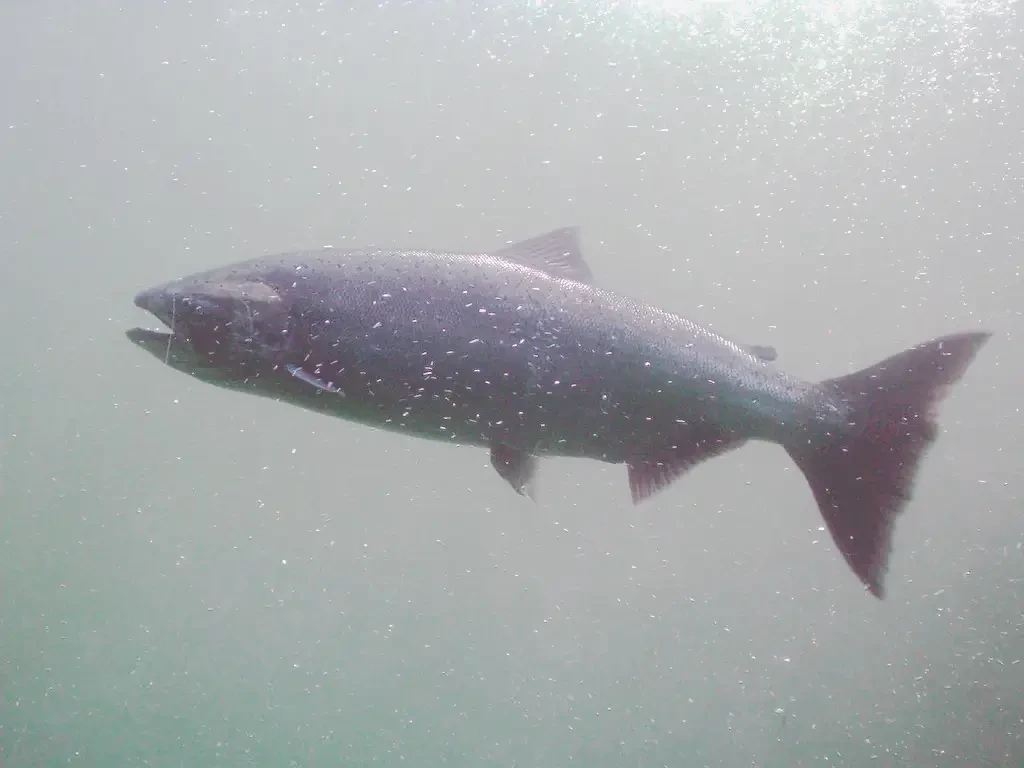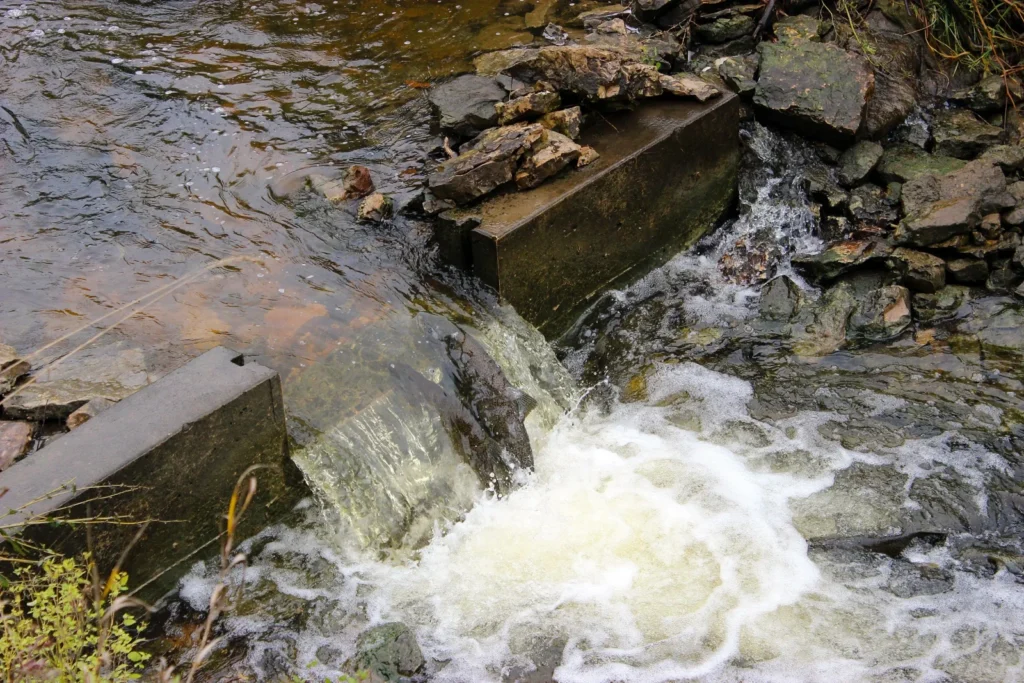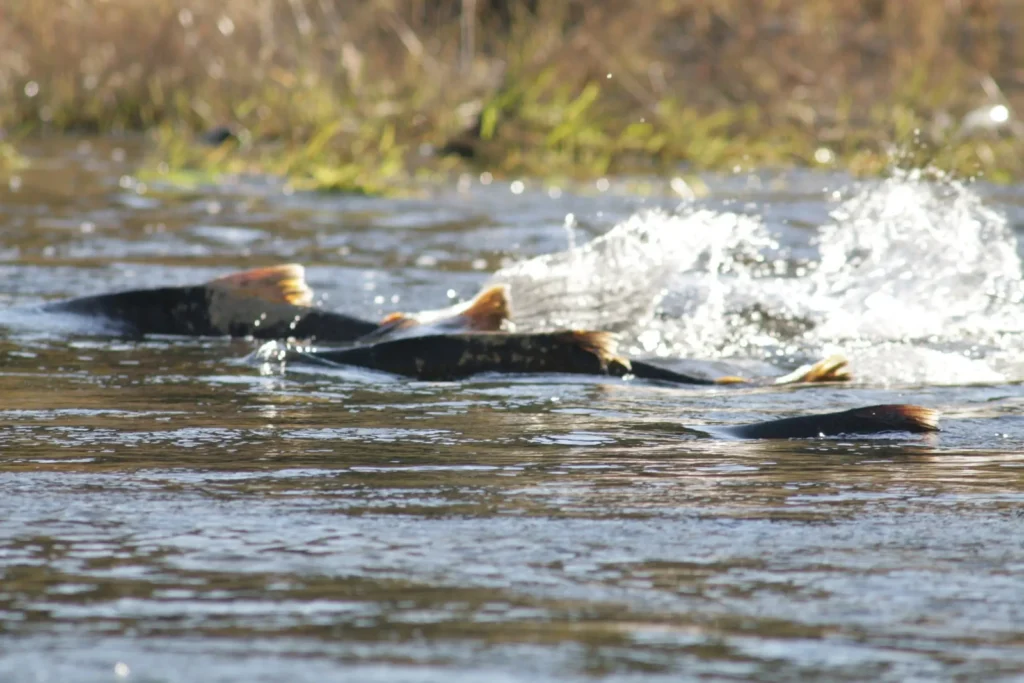Chinook salmon, or king salmon, (Oncorhynchus tshawytscha)- the largest and most valuable representative of the salmon family. It got its royal name due to its huge size, strength and taste qualities.
🔹 What makes chinook unique?
✔ The largest salmon in the world-can reach 1.5 meters in length and weigh more than 60 kg!
✔ It makes one of the longest migrations among fish – up to 3,000 km from the ocean to spawning sites.
✔ It is of great commercial and ecological importance as an important species for the fisheries and culture of the indigenous peoples of North America.
This majestic fish is a symbol of the power of nature and extraordinary endurance. Let's take a closer look at its features.

Scientific classification
🔬 Taxonomy of chinook salmon:
✔ The Kingdom: Animals (Animalia)
✔ Type: Chordal (Chordata)
✔ Class: Lucheperi pisces (Actinopterygii)
✔ Row: Salmonoid (Salmoniformes)
✔ Family: Salmon products (Salmonidae)
✔ Gender: Pacific Salmon (Oncorhynchus)
✔ View: Oncorhynchus tshawytscha
📌 Interesting!
Latin name of chinook salmon – tshawytscha - it comes from the language of the indigenous peoples of Kamchatka and Chukotka, who first gave it its name.
Appearance and anatomy
🔹 Main Features:
✔ The body is elongated, streamlined, and powerful
✔ The color varies depending on the environment and stage of life:
* In seawater – silver-blue
* During spawning – it gets darker, and a reddish-bronze hue appears
✔ The head is large, with a strong jaw and small teeth
✔ The dorsal fin is small and the tail is massive, which helps with long migrations.
🔹 Sizes:
✔ Average length: 90-120 cm
✔ Maximum length: 150 cm
✔ Average weight: 10-25 kg
✔ Maximum weight: 61.2 kg
📌 High score!
The largest recorded chinook weighed 61.2 kg and was caught in the Kenai River (Alaska).
Range and habitat
🌍 Where does chinook live?
✅ North Pacific:
* West Coast of North America (from California to Alaska)
* Kamchatka, Kuril Islands, Sakhalin
* Okhotsk and Bering Seas
* Found in rivers in Japan
🔹 Habitat features:
✔ Marine and freshwater fish (anadromous species)
✔ It spawns in mountain rivers with clear, cool water.
✔ Young people spend 1-2 years in the river before going to the ocean
📌 Interesting!
Chavicha can live both in the wild and in artificial conditions – it is bred in fish farms because of its valuable meat.

Life cycle and reproduction
🔹 How does chinook live?
✔ It is born in fresh water and then migrates to the ocean
✔ Lives in the sea from 3 to 8 years
✔ Returns to the river to spawn, covering thousands of kilometers
✔ After spawning, most individuals die (like other Pacific salmon)
🔹 Spawning:
✔ Occurs in mountain rivers with clear water
✔ The female digs a nest in the pebbly bottom and lays up to 14,000 eggs
✔ The male fertilizes the eggs, after which the adults die
✔ Larvae hatch via 3-5 months
📌 Interesting!
Young chavichas can stay in the river for up to two years before heading out to the ocean.
Nutrition and lifestyle
🔹 What does chinook eat?
✅ In rivers:
* Insects, larvae, small crustaceans
✅ In the ocean:
* Small fish (herring, capelin)
* Squid and krill
📌 Interesting!
Chinook salmon – aggressive predatorwhich grows rapidly thanks to a rich diet.

Enemies and threats
🔹 Predators:
Killer Whale Braid
Ty seals
Great big sharks
🔹 Major threats to the species:
Supramir overfishing
Zabrudnennya river pollution
Dispute construction of dams blocking migration routes
📌 Interesting!
Some chinook populations are threatened with extinction due to human activity.
Meaning for a person
🌍 Main usage aspects:
✔ High-quality meat-popular in cooking
✔ Valuable commercial fish-caught on a large scale
✔ An important part of the indigenous culture of North America
🔹 Aquaculture:
✔ Chinook salmon is actively grown in fish farms
✔ It is one of the most important salmon species in the global fishing industry
📌 Interesting!
Chefs appreciate chinook salmon for tender, fatty meatwhich has a rich taste and high nutritional value.
Conclusion
🐟 Chinook salmon is the real king of salmon!
Due to its greatness, strength and endurance, it has become a symbol of wild rivers and the power of nature.
💡 In fact, without this fish, it is impossible to imagine the ecosystem of the Pacific Ocean and the rivers of North America.
📢 Have you ever tried chinook salmon? How does it taste to you? 🍣👑